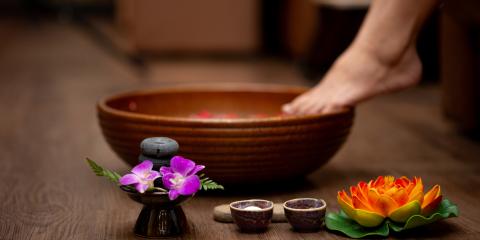Excerpted from Stephanie Tourles’s Essential Oils: A Beginner’s Guide by Stephanie L. Tourles. Used with permission from Storey Publishing.
How Does Aromatherapy Work?
An essential oil can contain millions of molecules (some of which are quite aromatic and others not so much). These molecules easily penetrate the skin whether applied “neat” (undiluted) or diluted in a carrier, and they rapidly penetrate the mucous membranes of the respiratory system when inhaled. Through both application and inhalation, the molecules travel quickly through the capillaries and into the circulatory system, which transports them around the body.
The aromatic vapors stimulate the olfactory nerve—the only nerve in the body that is in direct contact with the external environment—and act directly on the limbic system of the brain, the area that houses memories, emotions, desires, and appetites. As the molecules travel through the body, the oils’ complex array of components interact with the body’s own chemistry, exerting therapeutic effects, sometimes profound ones. Their action stimulates various physiological and psychological responses, such as relief from pain, renewing of damaged skin tissue, reduction of inflammation or fever, invigoration or relaxation of the senses, release of hormones, or a positive boost in mood or cognitive ability.
The Benefits of Essential Oils
The compelling benefits of pure essential oils are often nearly immediate, and you may find yourself surprised by the speed at which they work. Direct inhalation of lavender oil can quickly quell a bout of anxiety, for example, while breathing in a combination of Roman chamomile and peppermint oil can deliver blessed relief from a tension headache within minutes. All this amazing soothing plant energy conveniently packaged in a tiny bottle! That’s my kind of medicine.
Interestingly, unlike with synthetic drugs or chemicals, there is evidence that essential oils do not accumulate in the human body but instead are excreted in the perspiration, breath, urine, and feces. If you constantly use the same essential oils or blends, however, it is strongly recommended that you occasionally take a break to allow your body sufficient time to properly metabolize and excrete those particular chemical constituents.
Essential Oil Application/Inhalation Basics
For ongoing application or inhalation, use the oil(s) or blend for 5 days, then take 2 days off. Depending on the method of administration, the particular oils used, and the genetic makeup, age, size, dietary intake, lifestyle, and overall metabolism of the individual, it can take anywhere from a few minutes to 12 hours for essential oils to be fully absorbed and 3 to 6 hours for them to be metabolized and expelled from a normal, healthy body. For an unhealthy and/or obese body, increase that to 12 to 14 hours.





